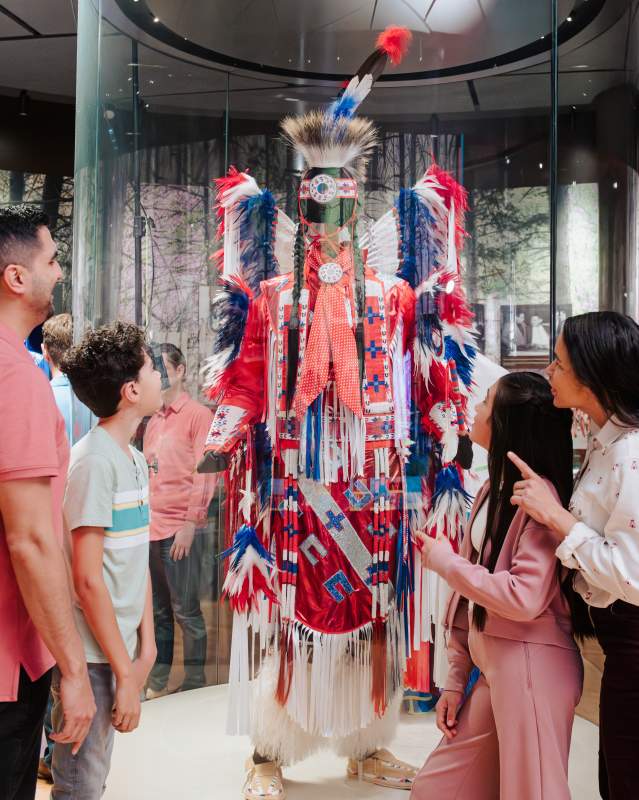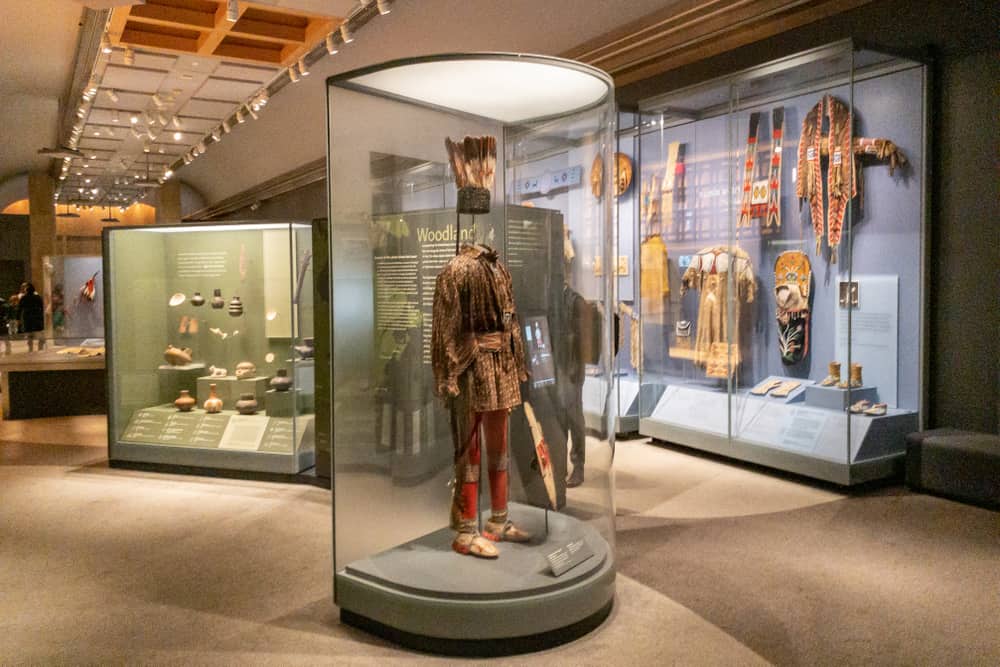
Exploring Native American Museums Without Financial Barriers: A Guide to Free Engagement and Educational Opportunities
Native American museums serve as vital institutions dedicated to the preservation, interpretation, and celebration of the diverse histories, cultures, and contemporary lives of Indigenous peoples across North America and beyond. They are not merely repositories of artifacts but dynamic cultural centers that foster understanding, promote dialogue, and challenge conventional narratives. While many cultural institutions, including museums, often charge admission fees to support their operations, a wealth of enriching and educational experiences can be accessed at Native American museums entirely free of charge. This article delves into the multifaceted opportunities available for free engagement, highlighting how these institutions prioritize accessibility, community involvement, and the democratization of knowledge.
I. The Foundational Philosophy of Accessibility
The commitment to public access and community engagement is often deeply embedded in the mission statements of Native American museums. Many of these institutions, whether tribal-owned, federally funded, or privately operated, view themselves as stewards of cultural heritage that belongs to everyone. The concept of decolonization, which increasingly informs museum practices, emphasizes making cultural resources and narratives accessible to all, irrespective of socioeconomic status. Free access, therefore, is not merely a philanthropic gesture but a principled approach to fostering inclusivity, building community relationships, and ensuring that Indigenous voices and histories reach the broadest possible audience. It acknowledges that financial barriers can disproportionately affect certain communities, thus actively working to dismantle such obstacles to cultural education and appreciation.
II. Engaging with Outdoor Spaces and Public Grounds

Even before stepping inside a museum building, visitors can often find significant free educational opportunities within the museum’s exterior spaces. Many Native American museums are strategically designed to integrate the surrounding landscape, often on historically significant lands, into the visitor experience.
- Architectural Significance and Landscaping: The very architecture of a Native American museum often incorporates Indigenous design principles, traditional materials, and symbolic elements. Observing these structures from the outside can provide an initial lesson in cultural aesthetics and engineering. Surrounding gardens might feature native plants used for food, medicine, or ceremony, often accompanied by interpretive signage explaining their significance in various tribal cultures.
- Sculpture Parks and Public Art Installations: Many museums host outdoor sculpture parks or public art installations created by Native American artists. These pieces frequently address themes of identity, land, history, and contemporary Indigenous experiences. These areas are typically open to the public without charge, offering a powerful visual and intellectual engagement with Indigenous artistic expression.
- Commemorative Markers and Land Acknowledgments: Public plazas and courtyards often feature commemorative plaques, historical markers, or detailed land acknowledgments that recognize the ancestral lands upon which the museum stands. These serve as crucial educational tools, reminding visitors of the long-standing Indigenous presence in the region and the ongoing relationships between Native peoples and their territories.
- Walking Trails and Interpretive Paths: Some institutions maintain walking trails or interpretive paths on their grounds, which may highlight archaeological features, significant natural landmarks, or reconstructed traditional dwellings. These paths offer self-guided tours that connect visitors to the land and its historical or cultural importance to local Indigenous communities.
III. Utilizing Lobby Areas and Introductory Exhibits
The public spaces within a museum’s entrance, such as lobbies, welcome centers, and gift shops, frequently offer free access to valuable information and preliminary insights into the museum’s collections and mission.

- Information Desks and Brochures: The information desk is a primary resource, providing free maps, brochures, and event calendars. These materials offer overviews of the museum’s permanent collections, temporary exhibitions, and upcoming programs, allowing visitors to plan their engagement strategically.
- Introductory Displays: Many lobbies feature small, free-access introductory exhibits or display cases. These might showcase a select artifact, provide a brief history of the local Indigenous population, or present an overview of the museum’s mission. These "taster" exhibits can pique interest and offer a foundational understanding without requiring a paid admission.
- Public Art and Architectural Details: Similar to exterior spaces, museum lobbies often house significant public art installations, murals, or architectural details inspired by Native American cultures. These are freely viewable and contribute to the overall cultural immersion.
- Gift Shop Browsing: While purchases are not free, browsing the museum gift shop can be an educational experience in itself. Many shops feature authentic Native American arts and crafts, books by Indigenous authors, and educational materials. Observing these items provides insight into contemporary Native American artistry, literature, and entrepreneurship.
- Visitor Orientation Areas: Some museums offer free visitor orientation films or multimedia presentations in their lobbies or designated public viewing areas. These short features often provide essential context for understanding the museum’s collections and the broader narratives it presents.
IV. Leveraging Digital Resources and Online Engagement
In the 21st century, the digital realm has become an indispensable extension of the museum experience, offering unparalleled free access to information and collections from anywhere in the world. Native American museums have been at the forefront of utilizing digital platforms to broaden their reach and fulfill their educational mandates.
- Comprehensive Museum Websites: A museum’s official website is a treasure trove of free resources. This includes:
- Digital Collections: High-resolution images and detailed descriptions of artifacts, historical photographs, documents, and archival materials. These digital archives allow for in-depth exploration of items not always on physical display.
- Online Exhibitions: Curated virtual exhibitions that replicate or complement physical exhibits, often with additional multimedia content like audio interviews, videos, and interactive maps.
- Educational Resources: Lesson plans, curriculum guides, and activity sheets for educators and families, designed to facilitate learning about Native American cultures.
- Research Databases: Access to scholarly articles, research papers, and bibliographies related to Indigenous studies.
- Blogs and Articles: Regularly updated content featuring curator insights, community stories, historical analyses, and contemporary issues.
- Event Calendars: Detailed listings of free public programs, lectures, workshops, and virtual events.
- Social Media Platforms: Museums actively engage on platforms like Facebook, Instagram, X (formerly Twitter), and TikTok, sharing daily content such as "artifact spotlights," behind-the-scenes glimpses, interviews with staff or community members, and announcements of free events. These platforms offer immediate and informal access to cultural knowledge and community updates.
- YouTube Channels and Podcasts: Many institutions host YouTube channels featuring recorded lectures, cultural performances, storytelling sessions, documentary shorts, and educational series. Podcasts offer audio-based content, including interviews with elders, artists, and scholars, providing auditory learning opportunities accessible on demand.
- Virtual Tours and 3D Models: Advanced digital initiatives include virtual reality tours of museum spaces or historical sites, and 3D models of artifacts that allow for detailed examination from multiple angles. These technologies offer immersive experiences that transcend geographical limitations.
V. Attending Free Educational Programs and Community Events
Beyond passive engagement, many Native American museums regularly host free public programs designed to foster active learning and community participation.
- Special Event Days and Cultural Festivals: Museums frequently designate specific days or periods for free admission, often coinciding with significant cultural holidays (e.g., Indigenous Peoples’ Day, Native American Heritage Month) or annual community festivals. These events can feature free performances, craft demonstrations, storytelling, and family-friendly activities.
- Public Lectures and Panel Discussions: Many institutions offer free lectures by Native American scholars, artists, community leaders, and elders. These events provide opportunities to learn directly from experts and gain diverse perspectives on history, contemporary issues, art, and cultural practices. Panel discussions often explore complex topics, fostering critical thinking and dialogue.
- Cultural Demonstrations and Workshops: Observing traditional craft demonstrations (e.g., weaving, pottery making, beadwork, carving) is often free and offers insights into Indigenous artistry and technical skills. While participation in workshops may sometimes incur a fee for materials, watching the demonstration itself is typically free and highly educational.
- Storytelling Sessions and Performances: Storytelling is a cornerstone of many Indigenous cultures. Free storytelling sessions by elders or cultural practitioners offer rich narratives, moral lessons, and historical accounts. Similarly, free public performances of traditional dances, music, or theatrical pieces provide vibrant expressions of cultural identity.
- Film Screenings: Museums often host free screenings of documentaries and films by Indigenous filmmakers, followed by discussions, offering powerful insights into Native American perspectives and contemporary issues.
VI. Strategic Planning for Maximizing Free Engagement
To fully leverage the free opportunities at Native American museums, visitors can employ a strategic approach:
- Consult Museum Websites: Always check the official museum website or call ahead for the most current information on free admission days/hours, special events, and online resources.
- Inquire About Specific Exemptions: Some museums offer free admission to specific groups, such as tribal members, military personnel, veterans, children under a certain age, or local residents. It’s always worth checking if you qualify for any such exemptions.
- Utilize Reciprocity Programs: If you hold a membership to another museum or cultural institution, check if it participates in any reciprocity programs (e.g., North American Reciprocal Museum Association) that grant free or discounted admission to partner museums.
- Focus Your Visit: If time is limited, prioritize engaging with the outdoor spaces, lobby exhibits, or attending a specific free program that aligns with your interests.
- Combine Online and On-Site Visits: Use the museum’s online resources to prepare for a visit, identify key areas of interest, and deepen your learning after an on-site experience.
VII. Conclusion
Native American museums are indispensable educational and cultural institutions that actively strive to make Indigenous histories, cultures, and contemporary narratives accessible to everyone. By embracing a philosophy of public service and leveraging both physical spaces and digital platforms, these museums offer a remarkable array of free opportunities for learning, engagement, and appreciation. From exploring culturally significant outdoor grounds and absorbing introductory lobby displays to delving into extensive online archives and attending vibrant free public programs, individuals can immerse themselves in the rich tapestry of Native American heritage without financial barriers. Engaging with these resources not only enriches personal understanding but also contributes to the broader effort of fostering respect, challenging stereotypes, and supporting the ongoing vitality of Indigenous cultures. By proactively seeking out these free avenues, visitors can embark on profound journeys of discovery and connect with the enduring legacy and dynamic future of Native American peoples.


